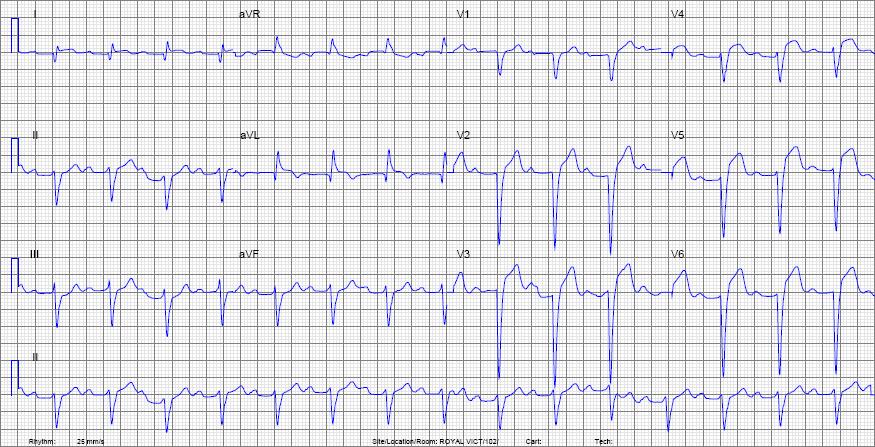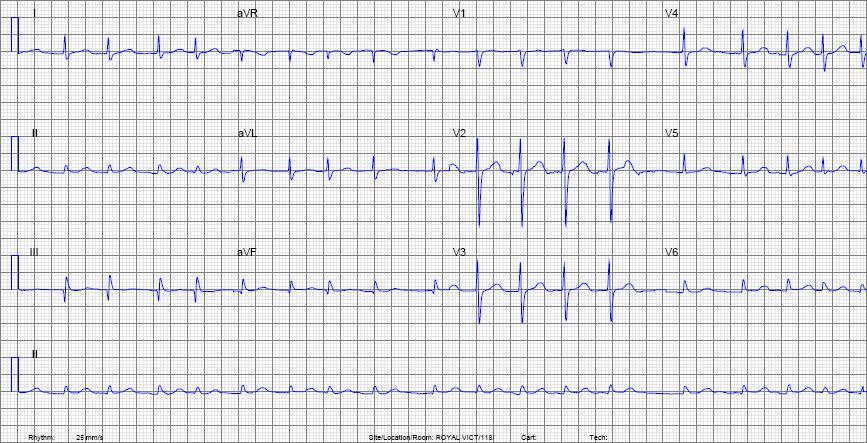There are 2 ways to read the rate on a standard EKG (standard means 5 big boxes = 1s):
1. Count big boxes with this sequence: 300,150,100,75,60,50 (this is Dubin's method)

So the rate in the above tracing is around 75 bpm. The trick here is to memorize the sequence 300,150,100,75,60,50 and then count the boxes with those labels as shown above.
2. The other method is 300/(number of big boxes between two QRS's)
Use whichever method you find easier ... they're really both the same. To be even more accurate, you can divide 1500 by the number of small squares. Now try it - what is the rate in the following tracing?

| Rate | about 100 |
If the rate is irregular, as in atrial fibrillation, there is a 3rd way to get the rate:
3. Count the number of QRS's across 1 page and multiply by 6 to get the rate.
Calculate the rate in the following EKG

| Rate | around 108 (18 QRS complexes x 6) |
Tutorial 1: Rate Next Tutorial